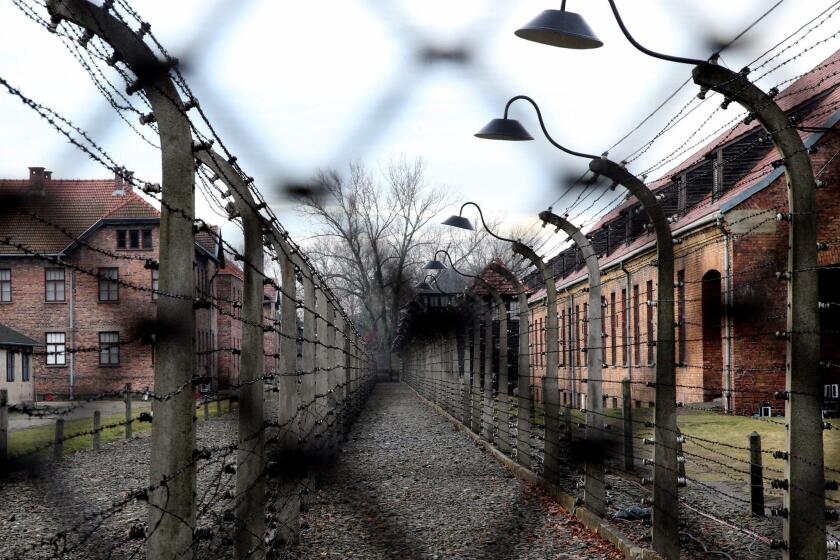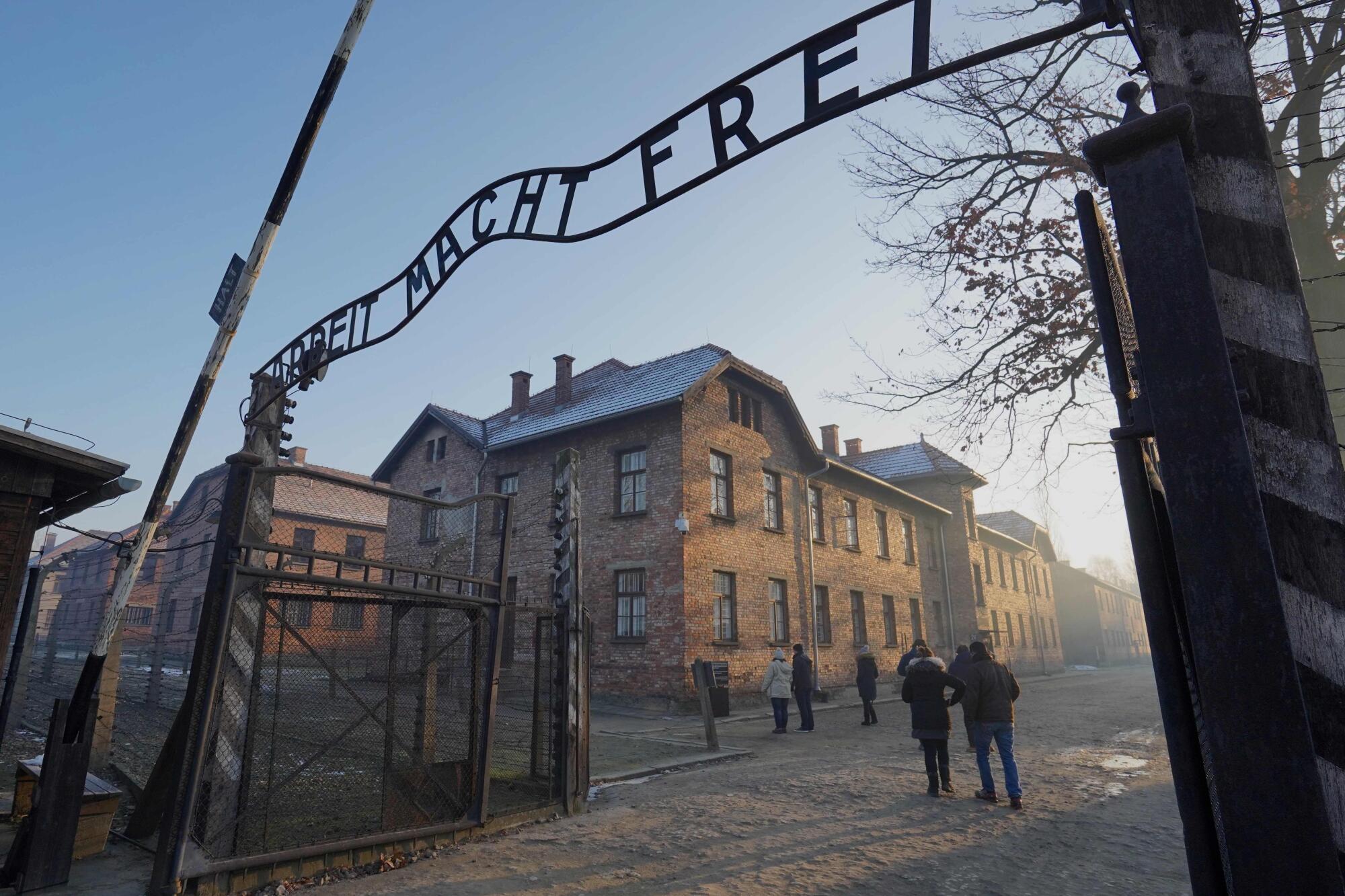
- Share via
KRAKOW, Poland — Ralph Hakman thumbed through a display of books about the Holocaust on a table at the Jewish museum in Krakow, not far from where he was born.
One was about Dr. Josef Mengele, the so-called Angel of Death who performed deadly experiments on prisoners at the Auschwitz death camp.
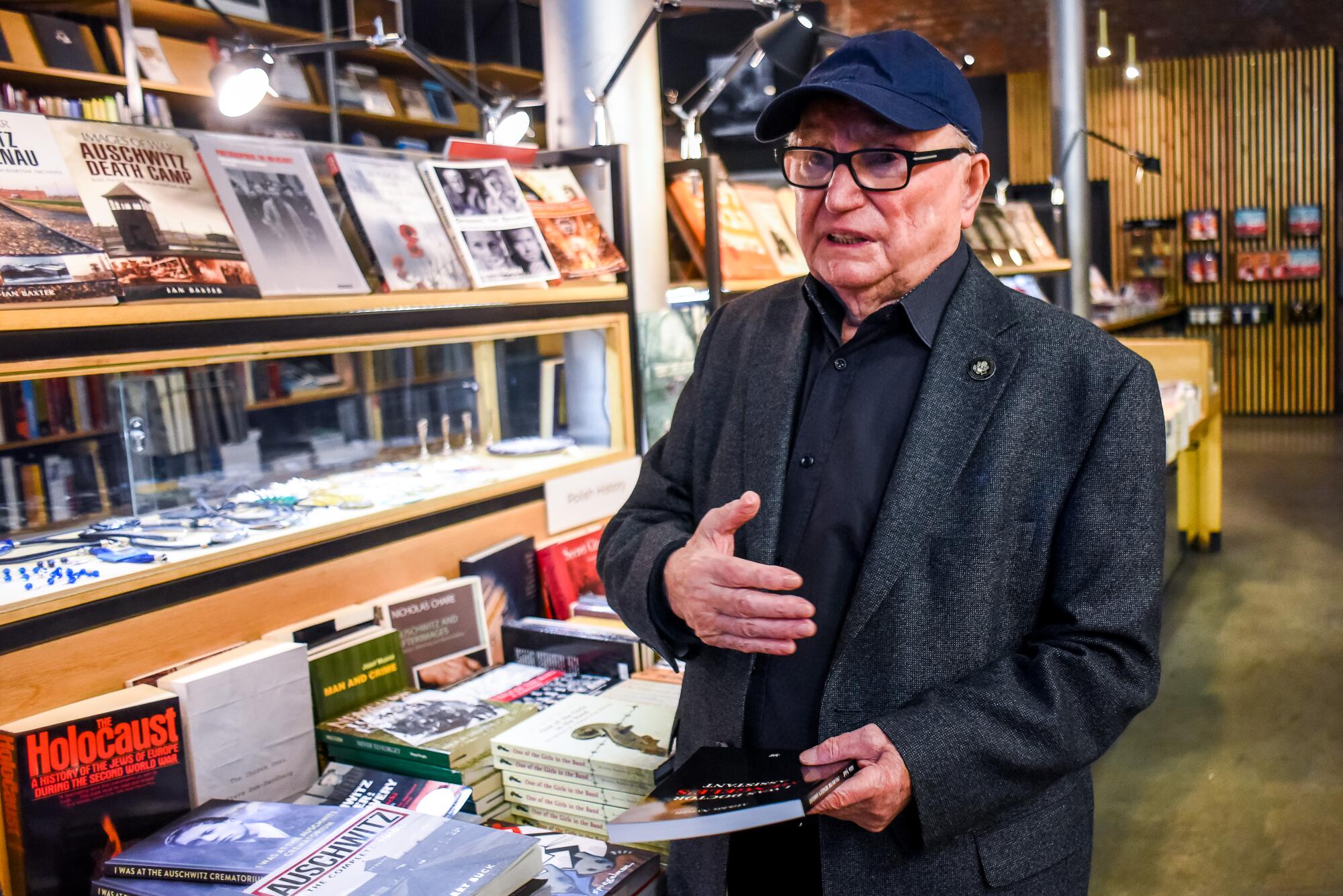
“Oh yes, I remember him,” Hakman said.
He grabbed another book, this one about the crematorium at Auschwitz, where prisoners, most of them Jews, were turned to ash after their murder in gas chambers.
“I know this story,” he said.
Hakman is now 94 and lives in Beverly Hills. But he is in Poland this week to return to Auschwitz and adjacent Birkenau, a place where he spent three years of his young life, for Monday’s commemoration of the 75th anniversary of their liberation by Soviets.
Why go back to the most notorious death camp in history, a place that is synonymous with misery, cruelty and horror?
Why remember the worst time of his life?
Hakman’s answer takes him back to the beginning, to a time when he still had sisters and brothers, still had a loving mother and father, when Poland still was home to millions of Jews.
Born 122 miles north of Krakow near the city of Radom in 1925, he was the fifth of 10 children in an Orthodox family. His father, Yitzhak, spent the days buying cattle in the countryside. His mother, Rose, helped run the family’s kosher butchery. A third of Radom’s 81,000 residents were Jewish.
Hakman was 14 when German soldiers invaded on Sept. 8, 1939. They shut down his Jewish school, raided synagogues and banned his father from working. By the spring of 1941, Nazis set up two ghettos. One surrounded the family’s two-room house in Glinice. Jews faced death for sneaking in food.
His father, who sold meat on the black market to survive, was arrested in a roundup of Jews the next year. When he escaped, the family went into hiding. Each person tucked him- or herself away into buildings in corners of the ghetto. Police caught an older sister and her 2-year-old.
Hakman’s mother proposed a deal.
“If you turn yourself in, they will let your sister and the baby go.”
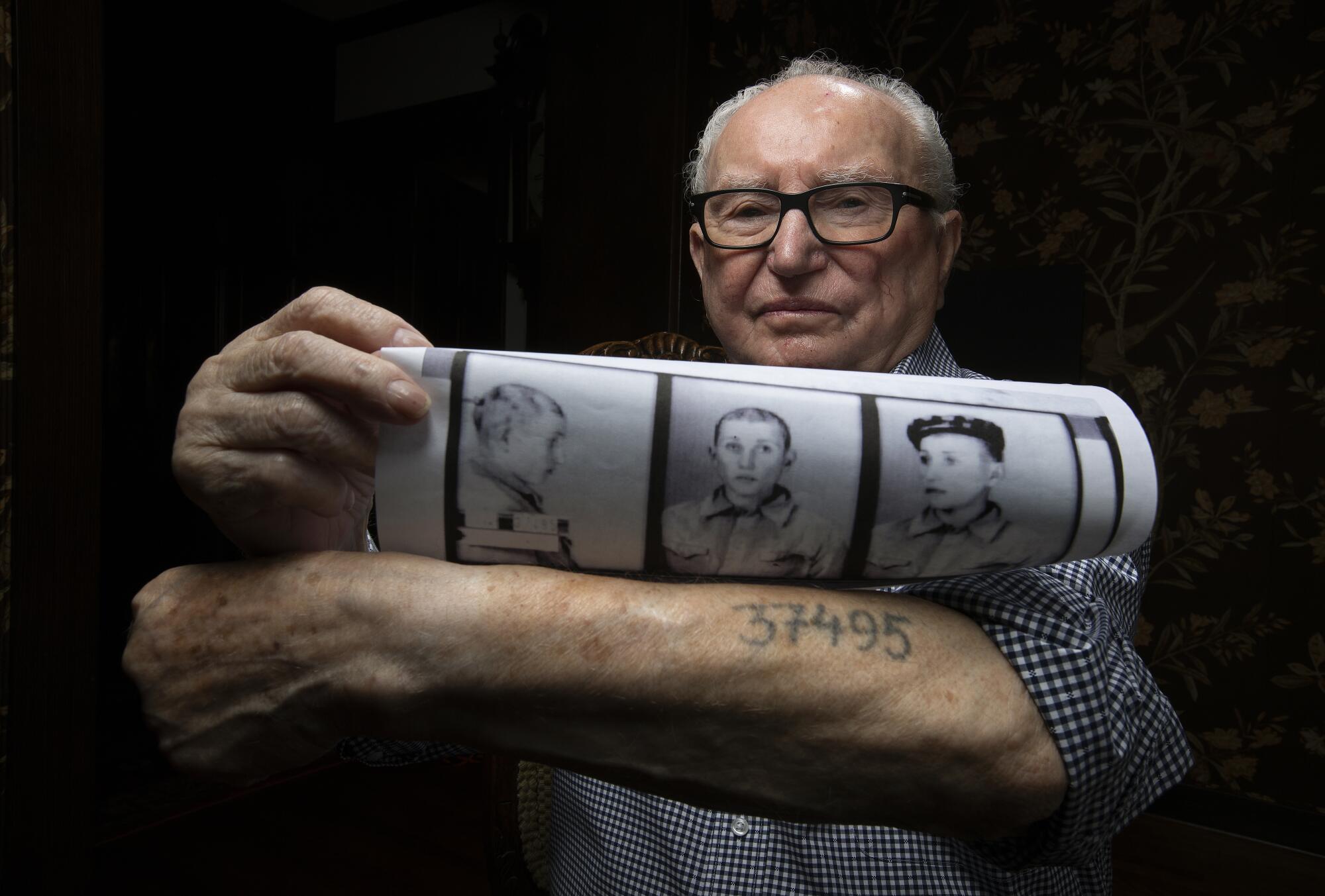
He would never see the family together again.
It was May 1942 when he was shipped on a cattle car to Auschwitz-Birkenau. He was 17 years old.
He was 20 when he got out, but decades older in his soul.
Three-quarters of a century later, he’s among the last remaining survivors of the concentration camp, one where 1.3 million were imprisoned and 1.1 million killed, the vast majority of them gassed to death and burned in crematoriums.
Many vowed to never set foot again inside the former prison camp an hour west of Krakow that today is a museum and memorial. Others are too poor or weak to go.
Hakman keeps returning.
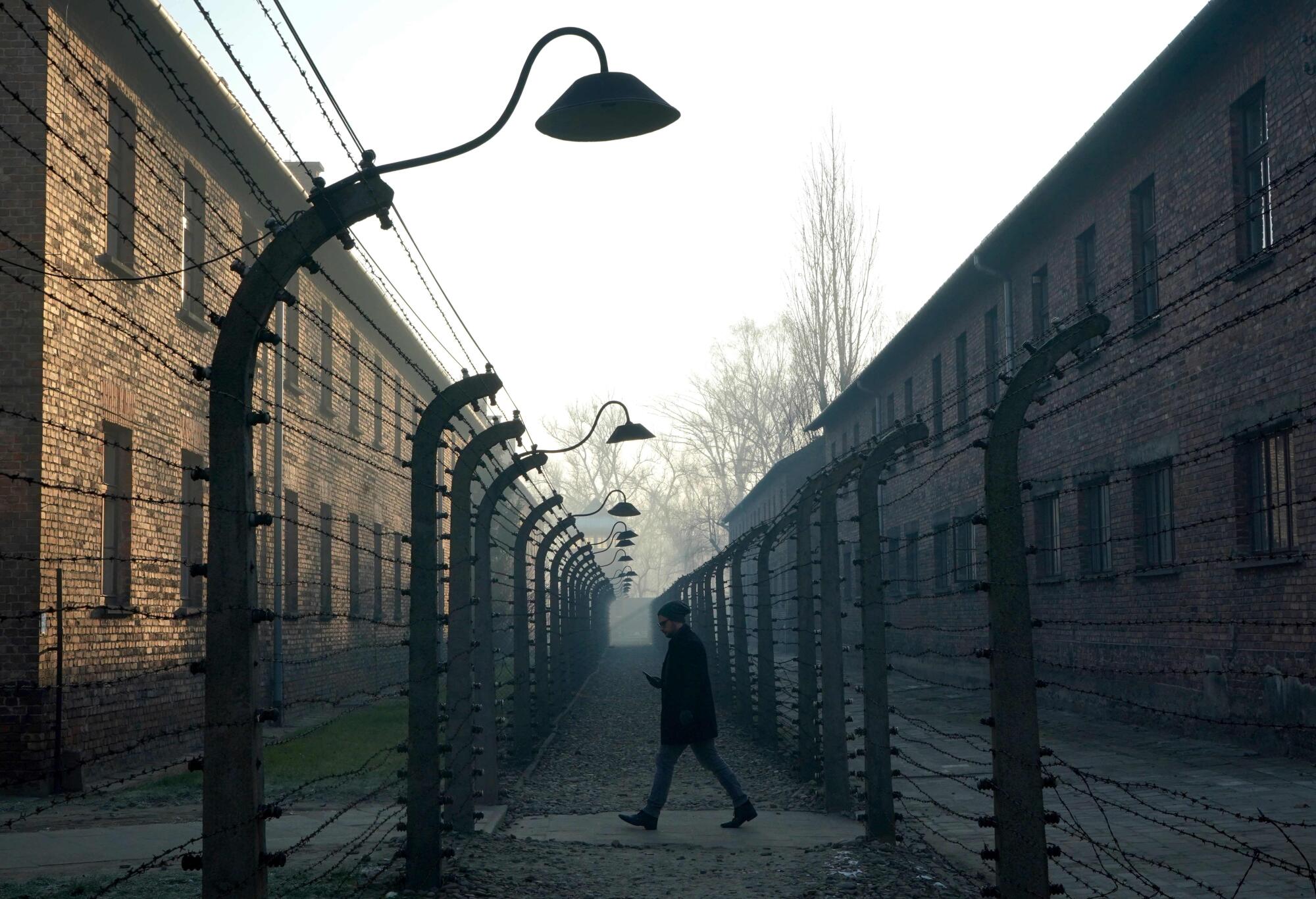
On Monday, he’ll stand in front of “death’s gate” at Birkenau, where trains once arrived day and night to dump Jews into gas chambers. Dozens of survivors will join him to honor the living and dead at a ceremony led by the Polish president.
Many will make the journey back for the first or second time.
For Hakman, it’s the fourth. He plans a fifth in the spring, when warmer weather will allow him to roam the grounds for hours with ease.
Holocaust survivors join heads of state to commemorate the 75th anniversary of the liberation of Auschwitz-Birkenau. But politics are thwarting unity.
It’s not that he wants to relive the horrors that killed nearly everyone he knew, left his body frail, and taught him to recognize the smell of torched flesh and pools of blood.
It’s that he has to.
“I would be guilty not to go. What if I see someone I know?” said Hakman, who moved to Indianapolis in 1949 from a displacement camp in Stuttgart, Germany, and worked at a packing house. “What if these are my last chances?”
There are fewer than 2,000 living survivors of Auschwitz. In the U.S., the number is under 500.
Just a handful live in Southern California, once home to one of the largest Holocaust survivor communities in the world.
Nearly every survivor Hakman has known is dead. So are some of their children.
He never imagined he would outlast them all.
When Hakman moved to Los Angeles in 1960, it was hard to enter a synagogue without meeting someone who knew the exact details of the Holocaust because they had lived it.
Across the Westside, survivors formed organizations. The 1939 Club held fundraiser galas for Israeli charities at the Beverly Hilton and endowed a chair in Holocaust studies at UCLA. The Radomer Society was made up entirely of former Radom residents and their children. At its height, it had 60 families.
Physical memorials to the Holocaust bloomed. Survivors founded a museum in Pan Pacific Park in 1961. One of the first major artworks honoring victims was dedicated five years later at Hakman’s synagogue, Temple Beth Am. Made up of wall-sized cement blocks bridged by the bima, it depicted the names of ghettos and extermination camps in Hebrew. Carved in English was the phrase, “We shall not forget.”
Sometimes, the museum is nearly empty if no school groups are touring. The club, now called the 1939 Society, is run by the adult children of survivors. The Radomer Society no longer exists. Crews dismantled and moved the temple’s memorial two years ago during a remodeling to create a contemporary sanctuary with more natural light.
“People said they wouldn’t forget,” Hakman said. “They are.”
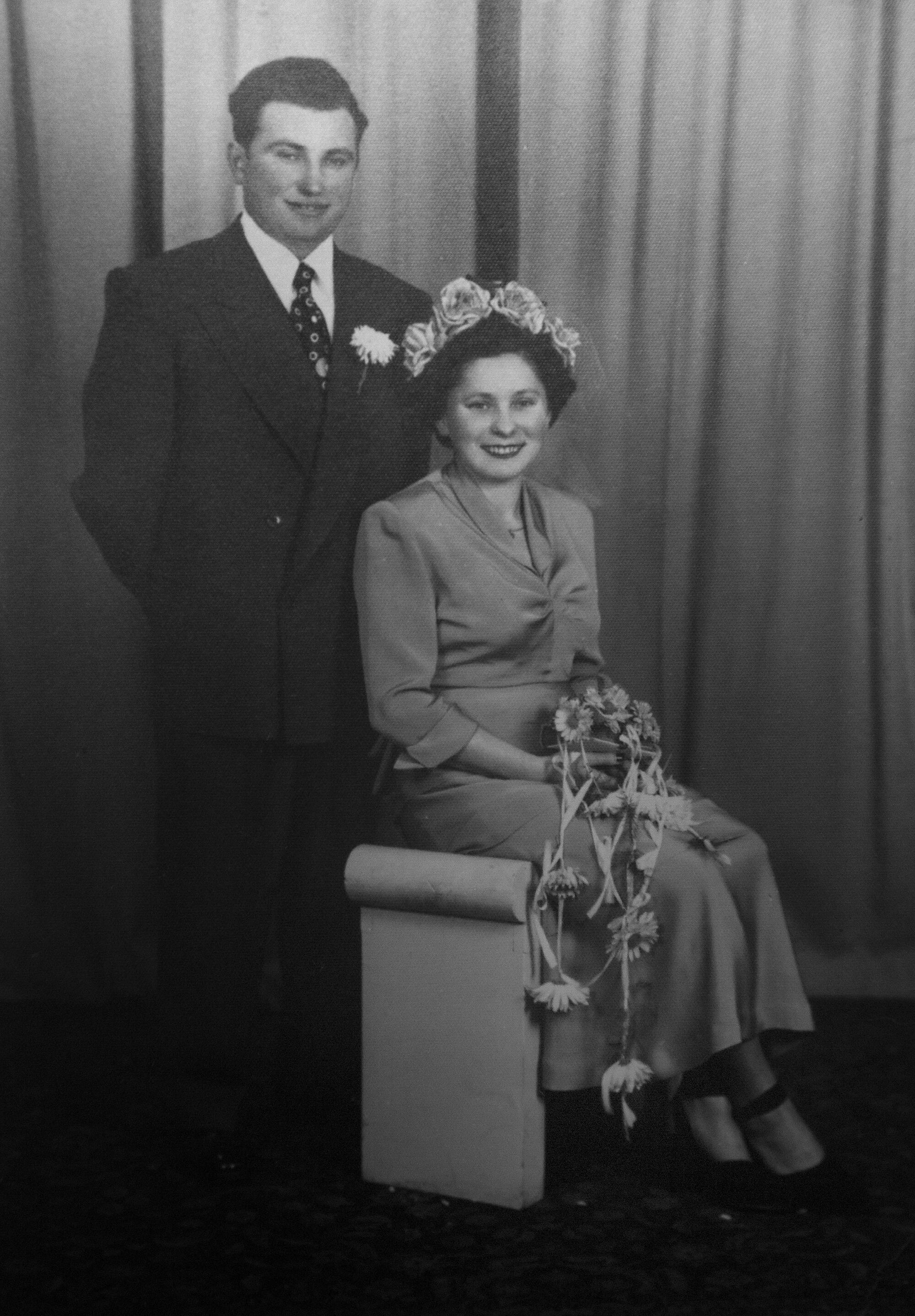
On Saturdays and Sundays, he and his wife, Esther, a survivor whom Nazis used as slave labor at a munitions factory in German-occupied Poland, would go to Roxbury Park to be around others like them. Sometimes, 50 would show up. Esther would bring homemade p’tcha — a jelly made from calf’s foot — along with kugel and gefilte fish.
They’d play gin rummy and chat in Yiddish, reminiscing about life in the homeland. They remembered how they felt at displacement camps in Feldafing and Stuttgart after the war’s end. They were free yet lost and alone as they discovered only ash was left of loved ones.
Some weekends, they’d rent whole floors at a motel by Lake Elsinore, where Hakman would barbecue brisket from the cold storage warehouse he founded in Vernon.
“We’re really not normal people, us survivors,” he said. “So we had to be around each other because we understood.”
They laughed along with him when he joked that he didn’t know if he was born March 11 or March 18. Like many who lived beyond the camps, they, too, had no birth certificates. They’d compare the identification tattoos Nazis forced on their arms. They could tell from the numbers who spent the most time imprisoned.
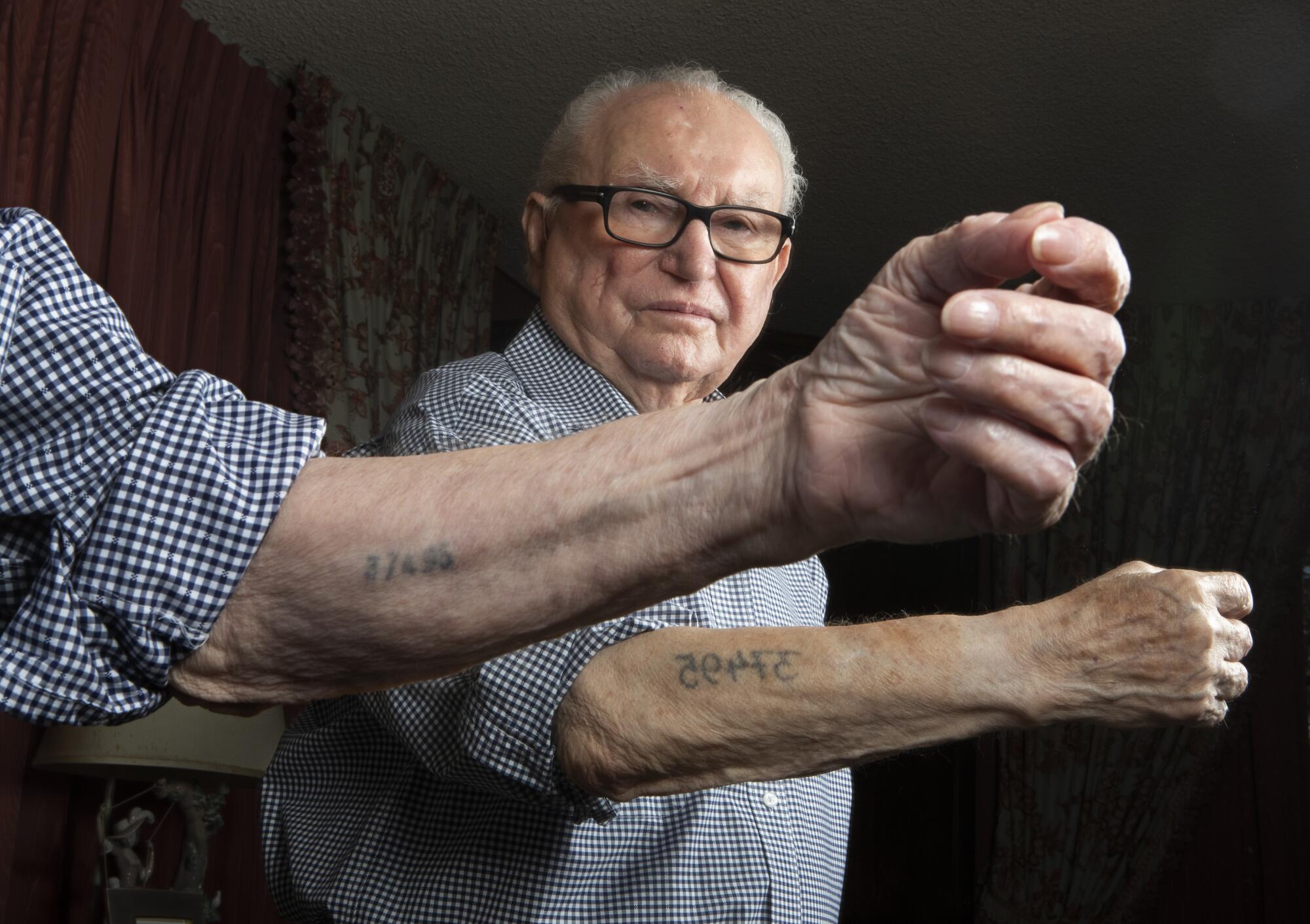
Hakman’s stories always went into more detail and covered more time.
He arrived at Auschwitz on June 6, 1942. He was sent the next day to Birkenau, two miles away, where he was for three years. It was an unusually long time to stay alive in a place built for death.
Hakman had help. He would sneak out at night to find his uncle, Sruel, who worked in the infirmary barracks and gave him bread. During a job mixing and pouring cement for building foundations, a Polish foreman handed him a bowl of soup each day.
Plucked one time for a new assignment, he waited in a building with other prisoners. He heard someone say “sonderkommando” and jumped out a window to run back to his barracks. The word was for prisoners tasked with disposing of bodies from crematoriums. Hakman had heard the Nazis murdered each group of sonderkommandos by gassing them every three months.
Like all survivors, he had his share of harrowing tales. There was the time a Nazi lashed him 25 times on his back with the wooden handle of a pickax one of those days visiting his uncle, when he was caught with extra bread. (The uncle died after the war.) There was the time he was digging a trench and a Nazi suddenly beat his head with the butt of a rifle, splitting his skin open to his skull.
His last assignment was to staff the bathhouse, where new prisoners — those who weren’t immediately killed — undressed and showered before they put on striped uniforms to work. It was 75 feet from the gas chambers. Hakman learned the sound of death pangs as poisoned prisoners clawed at the walls. He can still see the bodies tumbling out afterwards.
As Allied powers closed on the camp in January 1945, he was sent with hundreds of men on a death march. They walked all day and slept in barns by night. The goal was to reach other extermination camps or die slowly by exhaustion and starvation. They made their way to Grafenberg, Germany, where they dug trenches until a small group escaped in the spring. On May 6, Hakman said, he ran into a Russian soldier on a bicycle who announced the Nazi defeat. Germany officially surrendered on May 8.
When he made it back to Radom, he was told his parents were dead. So were eight siblings, including the sister he tried to save. Most were killed at the Treblinka extermination camp.
“I rarely had to explain that story in full to a survivor,” Hakman said. “They understood it without me even saying it.”
Just one sister, Sura, survived and fled to Russia. She died in her 80s in the early 2000s in Israel.
Over the years, some in his community decided it was time to finally revisit. So did others around the world, as a movement around Holocaust education grew and Poland opened its doors after the fall of communism.
Hakman first went with his wife and two children, Gary and Deborah, in 1983.
He had watched on TV as the first Polish pope, John Paul II, prayed four years earlier at the “Wall of Death,” where executions by gunshot took place. It was time to make the same visit. His daughter and wife held his hand as he walked, trembling, through the main gate bearing the sign, “Arbeit macht frei” (“Work sets you free”).
He went again in 2010, one year after Esther died of cancer at 82. His five grandchildren reluctantly joined. The eldest was 18. The youngest was 13.
“I had to show them what happened,” Hakman said.
He walked them by where he slept and where the crematoriums once were. He passed the spots where he saw men put bags on on their heads. They would run to kill themselves on an electric barbed-wire fence. Some were shot dead before they reached it.
He went again in 2015 after marrying his current wife, Barbara Zerulik. A Jew whose family immigrated before the war, she was still learning about the Holocaust.
But each time, and each year upon his return, there were fewer people to tell about his visits.
There was always family. But the survivor friends kept fading. Some lost their memories, others lost the ability to move freely.
Many died.
These days, instead of going to reunions at the park, Hakman goes to funerals.
He remembers all the names, ages and stories.
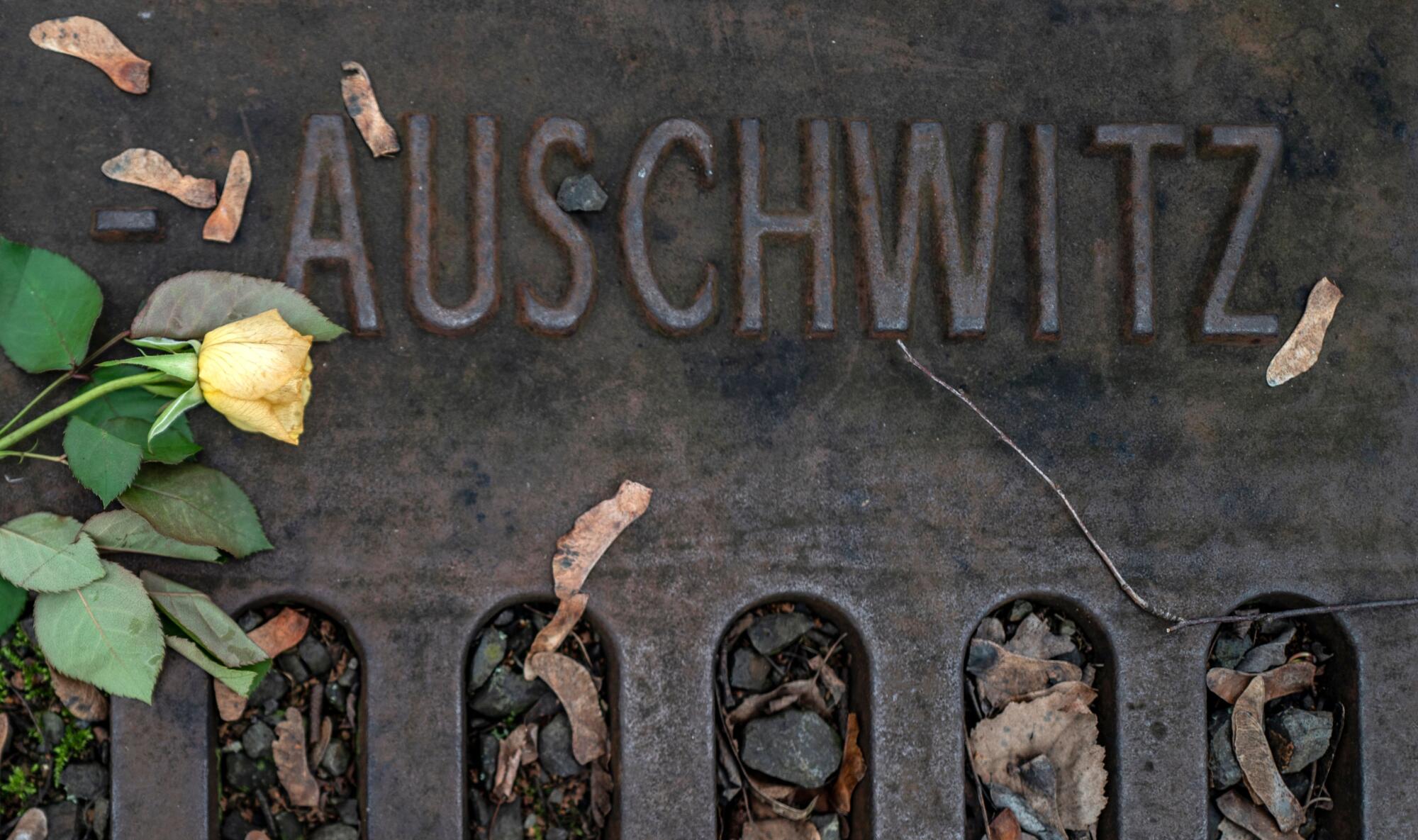
“Carl Frankel died in December,” he said in Krakow as he got ready for Shabbat service on Friday in the city’s old Jewish quarter. “He was 93 and from Radom. He had Alzheimer’s. He was not at Auschwitz.”
“Max Weber died in October 2018. He was 101.” Born in Lodz and sent to Auschwitz, he founded the construction company Shapell & Webb.
Hakman wishes they were with him now in Poland. Together, they would give thanks to God and pray for the loved ones they lost. They would help each other through the guilt of surviving against all odds.
Instead, he knows only one person who will be there this year, a 93-year-old cantor who was at the same prison and now lives outside Philadelphia. Each attended the other’s 90th birthday party. They last met two years ago in Los Angeles.
Hakman, his wife and two children joined 10 other survivors at the Galicia Jewish Museum for Shabbat ahead of the Monday anniversary. The survivors flew in from Memphis, New York, Montreal and Las Vegas.
He sat facing the crowd before a rabbi said kiddush, the traditional blessing recited over wine.
He recognized a man to his right as a survivor. He didn’t know him, but he seemed the right age and had the same faded tattoo on his left arm.
Hakman greeted him in Yiddish: “Gut Shabbos” (Good Shabbat). They exchanged names, and asked where the other lived.
Back home in Los Angeles, Hakman went by Ralph. This night, he went by his birth name, Rachmil.
Next to him was Johnny Jablon. Originally of Lodz, he lived in Montreal and traveled with his grandson.
They asked which camp the other knew best.
“Birkenau. I worked in the sauna,” Hakman said, feeling no need to explain.
Jablon, 94, had been in six, including Auschwitz.
“I worked in the warehouse where people’s clothes were sorted when they arrived,” he said.
Jablon stuck out his arm to show his number: 174,131.
He asked to see Hakman’s, so he pulled up his sleeve: 37,495.
“Oh, you were there much longer!” Jablon said.
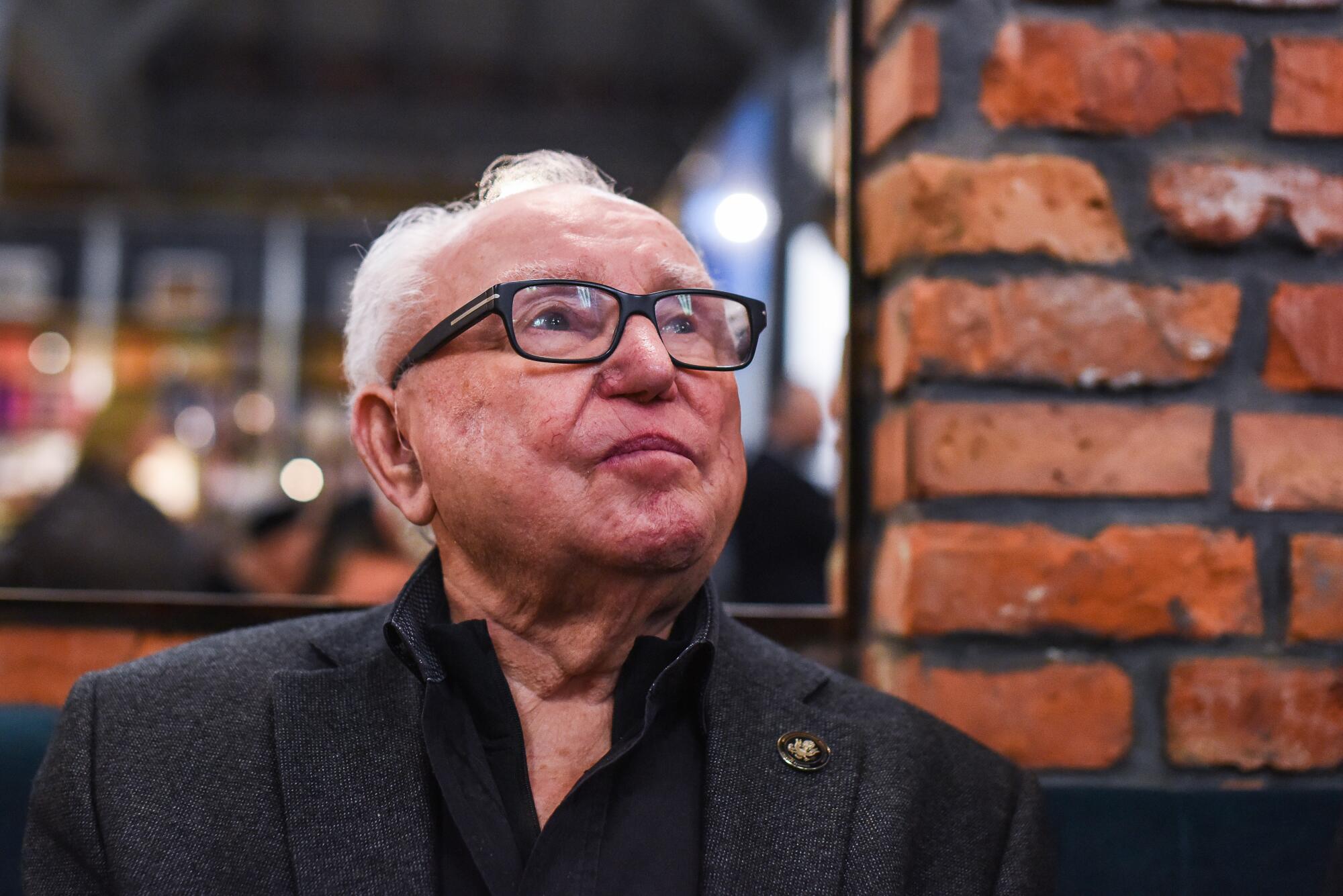
Hakman smiled and let out a chuckle.
It was the kind of humor he could most comfortably allow himself with other survivors. The pain wasn’t funny. But this was one of the many ways he had learned to deal with it.
He had found someone, again, who understood.
More to Read
Sign up for Essential California
The most important California stories and recommendations in your inbox every morning.
You may occasionally receive promotional content from the Los Angeles Times.

